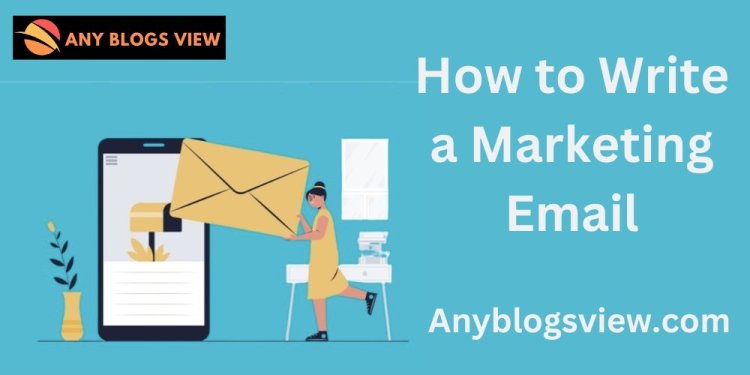A Complete Guide on How to Write a Marketing Email That Converts
Marketing Email
Share this Post to earn Money ( Upto ₹100 per 1000 Views )

Email marketing is one of the most effective digital marketing channels available, capable of delivering a substantial return on investment when done right. Whether you’re launching a campaign for a restaurant or promoting a product, effective email marketing hinges on writing compelling and personalized messages that encourage engagement. Below, we explore strategies to write a marketing email that captivates, engages, and converts, with a focus on personalization, subject line crafting, and targeted email types.
How to Write a Marketing Email
Crafting a successful marketing email requires a structured approach that connects with the reader, offers value, and includes a clear call to action. To start, identify your target audience and define the purpose of your email. Is it a promotional email, a newsletter, or a reminder?
Once the purpose is clear, follow these key elements:
- Engaging Subject Line: The first impression matters. A compelling subject line can increase open rates significantly.
- Clear & Concise Content: People often skim emails, so keep sentences and paragraphs short.
- Personalization: Mentioning the recipient’s name or referencing their interests creates a more engaging experience.
- Call to Action (CTA): A strong, actionable CTA gives the reader a clear next step.
- Mobile Optimization: Many users read emails on mobile devices, so ensure readability and responsive design.
These steps lay the foundation for emails that deliver strong results.
Personalization in Email Marketing
Personalization has become one of the most essential tactics in email marketing, with data showing that personalized emails deliver higher engagement rates. Personalization goes beyond using the recipient's first name; it includes segmenting your audience based on behavior, preferences, and past interactions. For example Personalization in Email Marketing:
- Behavioral Segmentation: If a user frequently clicks on emails about Italian food, prioritize similar topics.
- Location-Based Targeting: Send location-specific offers, especially relevant in the restaurant industry.
- Dynamic Content: Use dynamic fields to display different messages based on user data, allowing greater relevance and personalization.
Utilizing these techniques can greatly increase the chances of conversion, as recipients feel the email speaks directly to them.
Creating Irresistible Email Subject Lines
The Email Subject Lines is the first thing recipients see, so it’s critical to craft one that catches attention. Consider these strategies:
- Create Urgency: Phrases like "Last Chance!" or "Limited Time Offer" can encourage immediate action.
- Be Clear & Honest: Avoid clickbait; a misleading subject can lead to quick unsubscriptions.
- Use Emojis (Sparingly): Emojis can add visual interest and help an email stand out.
- A/B Testing: Try multiple subject lines to see which resonates most with your audience.
Subject lines are often the determining factor in whether an email is opened or ignored, so investing time in testing and optimizing them is worth the effort.
Effective Email Marketing Strategy Tips
To achieve the best results from Email Marketing Strategy Tips, incorporate the following strategies into your planning:
- Set Clear Goals: Define the purpose of each email, whether it's driving sales, gathering feedback, or increasing website visits.
- Analyze Data: Track open rates, click-through rates, and conversions to refine your approach.
- Frequency Optimization: Too many emails can lead to unsubscriptions, but too few may reduce brand recall. Find a balance based on audience engagement data.
- Experiment with Different Formats: Try plain text vs. HTML, image-rich emails, or videos to see what performs best.
Regularly analyzing and adjusting your email strategy ensures that campaigns evolve with audience behavior and industry trends.
Understanding Different Email Types
Different email types serve various purposes and fit into different stages of the customer journey. Here are some commonly used email formats:
- Welcome Emails: The first email a subscriber receives, setting expectations and making a positive impression.
- Promotional Emails: Designed to drive immediate action, such as a sale or limited-time offer.
- Newsletters: Offer updates and valuable content, building brand loyalty and awareness.
- Abandoned Cart Emails: Sent to remind customers about items left in their shopping cart, often with incentives to complete the purchase.
- Feedback Emails: Gather customer insights and demonstrate that you value their opinions.
Each email type has its unique purpose and should be crafted accordingly for maximum effectiveness.
Email Marketing for Restaurants
Email marketing can be particularly powerful for restaurants by helping maintain a loyal customer base and driving repeat visits. Here are some ideas Email Marketing For Restaurant:
- Exclusive Offers: Send special discounts or “members-only” deals to your email list to encourage frequent visits.
- Menu Updates: Announce new dishes or seasonal menus to excite regular patrons.
- Event Invitations: Invite customers to exclusive events or tastings to create a sense of community.
- Birthday Emails: Offer a small gift or discount for customers' birthdays, encouraging them to celebrate at your restaurant.
These strategies can help establish a stronger connection with customers, increasing the likelihood of repeat business.
Frequently Asked Questions
1. What makes a good marketing email?
A good marketing email has a clear purpose, engaging content, and a compelling call-to-action. Personalization and a well-crafted subject line also increase effectiveness.
2. How can I personalize my marketing emails?
Personalization can be done by using the recipient’s name, segmenting audiences by interests, and offering content relevant to past behavior or location.
3. What should I consider when creating email subject lines?
Keep them clear, honest, and interesting. Use A/B testing to see what works best with your audience and consider adding urgency or curiosity.
4. How often should I send marketing emails?
The frequency depends on your audience. Avoid overloading inboxes; instead, aim for consistency and focus on quality over quantity.
5. What types of emails work best for restaurants?
Promotional emails, exclusive offers, event invites, and menu updates work well for restaurants, keeping customers informed and engaged.
6. Why is email marketing important for restaurants?
Email marketing helps restaurants stay connected with customers, promotes offers, and drives reservations, creating a more loyal customer base.















